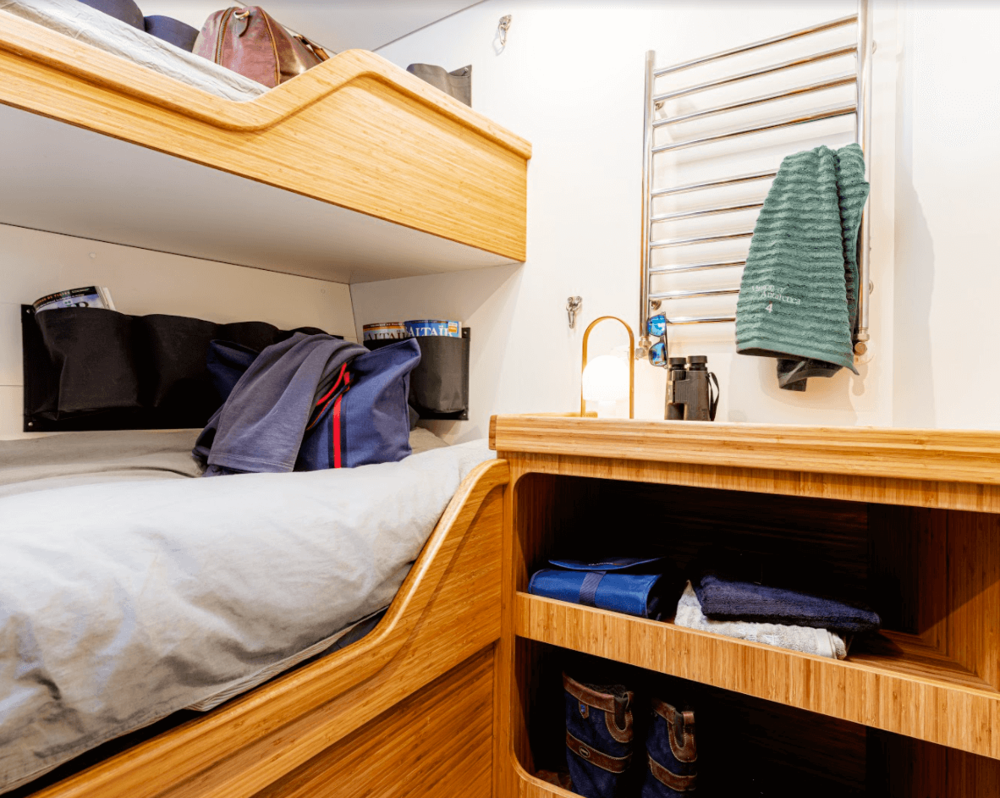This is an exclusive trip with a maximum of 7 participants (By application only)

Antarctica is the most remote destination on the planet with an abundance of wildlife, gigantic icebergs the size of cities and majestic mountain ranges. During January/February, it’s the migrating whale season and there’s often sightings of orca, humpback, minke, and southern right whales.
You’ll also see thousands of penguins huddling together like a scene from Happy Feet and leopard seals playing joyfully in the rich Southern Ocean. The Antarctic is a photographer’s paradise.
Date: 1st to 28th February 2027
Duration: 28 days
Start and finish: Puerto Williams, Chile
Costs: $35,900 USD (all inclusive)
Deposit: $2,500 USD (Non refundable)
Activities: Wildlife, landscape, zodiac cruising, underwater photography and snorkeling.
Note: If you are intending on snorkeling you will need to bring your own Drysuit and polar snorkeling equipment. We recommend you have cold water diving/snorkeling experience before entering the water in the polar regions.
Prerequisite: As this is an expedition ship, you will be exposed to the harsh elements of the southern ocean and experience on small vessels in open oceans is recommended. This is a working yacht so there will be periods where you are involved in the day to day support for the expedition crew sailing the yacht (regular 3 hour watch during the crossings). A good level of fitness is required when part of an expedition yacht.
Download Application Questionnaire
PDF version here
Included:
- Comprehensive pre-departure information
- All meals and drinks onboard during the voyage
- Guiding services from our trip leader and expedition experts
- Exploring the landscape surrounded by icebergs and an abundance of wildlife
- Step ashore in Antarctica, the last great wilderness
- All shore excursions and Zodiac (inflatable boat) cruises
- Port taxes and charges
- All entry fees to historic landings sites
- Airport transfers to and from port to yacht (Puerto Williams)
Exclusions:
- International or domestic flights to/from yacht/port
- Airport arrival or departure taxes
- Visa, passport, and vaccination charges
- Travel insurance or emergency evacuation charges
- Hotels and meals not included in the itinerary
If you are interested in joining this special expedition then contact us directly to apply to be a part of this unique experience.
The Vessel
The bare aluminum hull and deck structure is reinforced to withstand navigation in brash ice without deformation.
The schooner sail plan provides manageable sail handling in high winds and rough seas; and also redundancy, as the two mainsails are of equal size – the aft sail will fit on the forward mast.
A robust fixed keel with a solid aluminium machined centerboard allows for safe navigation in shoal waters.
Twin engines, with well protected propellers.
A workshop forward of the accommodation means running repairs can be made at sea.Hawser reels on in the transom and another on the foredeck can be used for shore anchors.
The bamboo interior joinery and furniture is comfortable yet hard-wearing and easy to maintain. Able to sleep 12, the yacht is designed for both private use and commercial chartering.
A sturdy gantry frame on the transom will carry an expedition RIB (a second RIB is stowed on deck) as well as the sat-nav antennae so in case of damage to the Axxon carbon masts, the yacht will not lose navigation and satellite communication capability. It also doubles as mainsail traveler track foundation.
A diesel stove in the spacious aft salon/dinette/galley provides efficient, reliable and comfortable heating to combat freezing temperatures. Radiators throughout the accommodations. During construction special attention was devoted to the insulation to combat the cold and condensation.
Life onboard
Yacht life is not for everyone, but being part of a small group adventure on an expedition vessel to Antarctica involves a sense of adventure, patience and team work. This journey can be one of the most challenging but rewarding experiences. we encourage all applicants to prepare for small spaces, limited resources (i.e showers every few days or so, tight sleeping quarters, early morning watches etc.). The comradery and the shared experience is something that will make your life onboard enjoyable, so we encourage you to take it all in and enjoy being in one of the last remote places on the planet.




Trip Leader – Scott Portelli
Antarctic Trip leader, Underwater, wildlife, nature photographer

Scott Portelli was recently awarded Wildlife photographer of the year (single capture) at the Australian Photographic Prize 2024 awards and Portfolio winner at the HIPA awards in 2023. With multiple awards at the prestigious Wildlife Photographer of the year in 2022 and 2016. He was also announced as the winner in the Australian Geographic Nature Photographer of the Year 2021 & 2024. He was awarded 1st place as part of a team representing Australia at the World Photographic Cup 2021. Also included in his accolades, he was announced winner at the GDT Nature Photographer of the Year 2021/2024. Some of his more noteworthy awards include national winner of the Sony World Photography awards 2016.
Scott has spent over a decade working in the polar regions with a focus on Antarctica and the Sub-Antarctic areas producing a unique portfolio of fine art photography that showcases the intricate environment and its intriguing inhabitants. Working in extreme conditions, Scott’s photography provides a rarely seen glimpse above and below the surface in some of the harshest places on the planet.
Some of Scott’s images from this past Antarctic season:







FAQ
How do I get to the departure point?
This expedition will begin and end in Puerto Williams in Chile. You can both fly or take a local ferry.
Airline: Chilean DAP Airlines operates daily flights (except Sundays) from Punta Arenas to Puerto Williams.
Ferry Company: Austral Broom operates the ferry service between Punta Arenas and Puerto Williams. The ferry departs from Punta Arenas twice a week (check the schedule on the Austral Broom website).
What is the weather like on the Antarctic Peninsula?
The Antarctic Peninsula has a maritime polar climate influenced by surrounding cold seas and strong coastal winds. Summer temperatures (November–March) typically range between -12°C and -1°C (10–30°F). Weather conditions can shift rapidly, from bright, calm days to snow, wind, and fog within hours.
The west coast tends to be milder and wetter due to prevailing westerly winds, while the east coast—facing the Weddell Sea—is colder and more exposed, with larger ice shelves and more frequent sea ice. Travelers should be prepared for all conditions, including snow, sun, and wind, often all in the same day.
Is our itinerary flexible to accommodate the weather conditions?
Yes—flexibility is key in polar travel. Our itinerary is designed to adapt to changing weather and ice conditions, which means that while not all landings are guaranteed, we maximize every opportunity to explore. This flexibility also allows us to take advantage of unexpected wildlife encounters and serendipitous moments that make each voyage unique..
Do I need a medical before we set sail?
All expeditioners will need to have a medical before departure as we are operating in a remote area, and it’s best for all concerned to have no surprises.
How fit do I need to be to sail?
These trips are designed for fit, agile and active people who have adventurous and positive outlooks. Participation is the key to enjoyment. No sailing experience is required. There is no age limit as we have had fit and active people of all ages, but this is a working yacht and you will need to participate in watches during the crossings.
Will I have a chance to help out on board?
This is a real ‘hands on’ expedition and everyone will need to be active in making the trip work. All tasks aboard are shared including: sailing, helming, anchoring, even cooking and domestic duties. Our aim is to take like-minded people on an experience of a lifetime and the expedition will work best if everyone is prepared to lend a hand and be a part of the crew.
What communications equipment is on board?
The Yacht has state of the art weather and communications systems. She is also equipped with Xaxero’s Sky-Eye System for real time satellite image downloads of weather systems which can be cross referenced with weather information from the Global Marine Network. we also use Starlink for general communications.
Trip Report
Read about what happens on tour by visiting our previous trip reports:
Antarctica sailing expedition 2025 Trip report
Photography
Top 5-tips-underwater-polar-photography – .PDF
Underwater Encounters with an Apex Predator
Terms & Conditions and Cancellation Policy
Please review our Terms & Conditions and Cancellation policy
Download Liability Waiver
For more information contact us through the website or directly via email at scott@scottportelli.com or +61 (0)402124453
